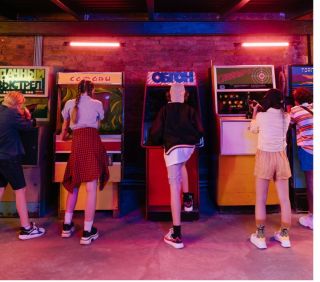Punishment
Do Adolescents Learn Better From Reward or Punishment?
New evidence shows reward and punishment learning differs across adolescence.
Updated January 8, 2024 Reviewed by Michelle Quirk
Key points
- Adolescence is typically linked to greater risk-taking and sensitivity to rewards.
- Learning from punishment increases from childhood to adolescence whereas learning from reward remains stable.
- These findings could be important for understanding antisocial behavior and improving learning.

This post was written by Patricia Lockwood, Ph.D. and Jo Cutler, Ph.D. with edits from Ruth Pauli, Ph.D.
Adolescence, the transitional phase from childhood dependency to adulthood, is a complex period marked by significant changes in behavior. Many of these are positive, developing adolescents’ independence, but young people are also more likely to take risks and seek rewarding experiences even if they are dangerous, such as substance use. Theoretical frameworks propose that this heightened risk-taking, impulsivity, and reward-seeking are linked to changes in the brain. Moreover, adolescence is identified as a high-risk period for mental disorders, particularly disruptive behaviour disorders associated with impulsivity. New research suggests that there are also important differences in learning from reward and punishment as we transition from childhood to adolescence, and these may be crucial for understanding this critical life stage.
Challenges in Understanding Adolescent Behaviour
The complexity of adolescent behaviour poses challenges for researchers. Traditional analysis techniques used in psychology often fall short of capturing underlying psychological processes. In addition, while taking risks, being impulsive, and seeking positive experiences are related behaviours, there is evidence linking them to different brain systems and distinct psychological processes. Previous research also often relied on questionnaires. In other areas of psychology, researchers have begun to use data science techniques that look at adolescents’ choices in simple games. Researchers can use these choices to decode how much adolescents learn from receiving rewards, such as small amounts of money or seeing smiling faces on the screen, and how much they learn from punishments or bad outcomes, like losing small amounts of money or seeing unhappy faces.
Another challenge is that there is already some evidence that adolescents have a preference to act rather than resist making an action. For example, in an arcade game, it might be that pressing buttons gives you points, but at other times in the game, you score more points if you do nothing. In experiments, if children press buttons more than older adolescents, it can be hard to disentangle whether they just prefer doing something over waiting passively or whether they are actually more motivated to get the points or rewards. We wanted to design an experiment that could distinguish between these two possibilities.
Computational Modeling: A New Frontier
To try to overcome these challenges, we turned to a data science method, computational modeling, and, specifically, reinforcement learning models. These models assume that actions and outcomes become linked through experience, and this experience influences future behaviour. For example, if you try a new tactic in a game and you unexpectedly win lots more points, you are much more likely to make the same action again. At the start, you learn a lot of new information about the consequences of what you did, but then if you keep repeating it, it becomes more predictable and less surprising each time. Now imagine you try a new tactic in a game and lose all of your points; you are very unlikely to try that again next time. The difference between these winning and losing examples shows the difference between learning from rewards compared to punishments.
While previous studies have hinted at differences from childhood to adolescence in how people learn from rewards and punishments, there were still inconsistencies. Some of these inconsistencies might be explained by the tendency to test relatively small groups of adolescents from similar backgrounds. Often in psychology studies, the sample might only be from one university in one country, and it might be quite small, with fewer than 50 people. This is often necessary, but it might help us to draw stronger conclusions if we see the same thing over many young people. We also wanted to be able to compare lots of adolescents across multiple countries so that our research findings might be more representative of all adolescents.
Separating Learning From Reward, Punishment, and Action Initiation Bias
To try to overcome some of these challenges, we tested a sample of 742 young people aged 9 to 18 years from multiple countries in Europe. The young people played a trial-and-error task involving abstract 3-D objects, in which they had to learn when to act (press a button) to win points and when to withhold responding (do nothing) to avoid losing points. We used data science models of reinforcement learning to measure how participants learned from reward compared to punishment. We also calculated each person’s tendency to always act known as their “action initiation bias.”
Our findings challenged previous assumptions about adolescent reward and punishment learning. We found that adolescents, compared to children, did not learn better from rewards. From childhood to adolescence (ages 9-18 years), the ability to learn from reward remained the same. However, there were also important differences. The ability to learn from punishment (losing points) increased from childhood to late adolescence. At the same time, the tendency to perform actions regardless of whether they won points or not decreased. If we had not also measured this tendency to perform actions "impulsively" (i.e., regardless of winning points), we might have concluded that adolescents also got better at learning from rewards, but adolescents just became better at withholding actions when it helped their performance.
Implications for Adolescent Learning
We know that the transition from childhood to adolescence is one of the most common times for the start of mental health problems and, particularly, disruptive behaviours. In our next study, we will compare reward, punishment, and action learning in young people who struggle with disruptive behaviour. Our findings also underscore the complexity of adolescent behaviour and the challenges researchers face in understanding it. The use of data science offers a promising avenue for unraveling the intricacies of reward learning, punishment learning, and action initiation biases during adolescence. As we continue to navigate the complexities of adolescence, these findings help contribute to more nuanced approaches to studying and supporting young individuals during this crucial developmental phase.
References
Blakemore, S. J. (2018). Avoiding social risk in adolescence. Current Directions in Psychological Science, 27(2), 116–122.
Hartley, C. A., & Somerville, L. H. (2015). The neuroscience of adolescent decision-making. Current Opinion in Behavioral Sciences, 5, 108–115.
Konovalov, A., & Krajbich, I. (2019). Over a decade of neuroeconomics: What have we learned?. Organizational Research Methods, 22(1), 148–173.
Nussenbaum, K., & Hartley, C. A. (2019). Reinforcement learning across development: What insights can we draw from a decade of research? Developmental Cognitive Neuroscience, 40, 100733.
Pauli, R., Brazil, I. A., Kohls, G., Klein-Flügge, M. C., Rogers, J. C., Dikeos, D., ... & Lockwood, P. L. (2023). Action initiation and punishment learning differ from childhood to adolescence while reward learning remains stable. Nature Communications, 14(1), 5689.


